Donald Trump’s Finances and the Art of Ignoring Conflicts and Contradictions
There are plenty of pieces missing from Trump's financial story that call into question both his skill as a dealmaker and his business acumen.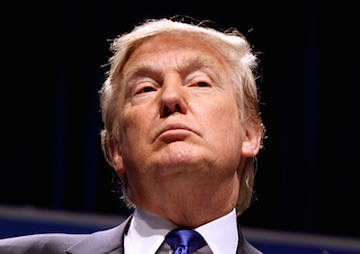 Donald Trump. (Gage Skidmore / CC BY-SA 2.0)
Donald Trump. (Gage Skidmore / CC BY-SA 2.0)
By Nomi Prins, TomDispatchThis piece first appeared at TomDispatch. Read Tom Engelhardt’s introduction here.
The 2016 election campaign is certainly a billionaire’s playground when it comes to “establishment candidates” like Hillary Clinton and Jeb Bush who cater to mega-donors and use their money to try to rally party bases. The only genuine exception to the rule this time around has been Bernie Sanders, who has built a solid grassroots following and funding machine, while shunning what he calls “the billionaire class” that fuels the super PACs.
Donald Trump, like Ross Perot back in the 1992 and 1996 elections, has played quite a different trick on the money-saturated American political system. He has removed the billionaire as middleman between citizen plebeians and political elites, and created a true .00001% candidate, because he’s… well, a financial elite unto himself, however conveniently posed as the country’s straight-talking “everyman.”
Despite his I-can-buy-but-can’t-be-bought swagger, Trump’s persona has been carefully constructed to deflect even the most obvious questions of conflict of interest that his wealth and deal-making history should bring up. He claims that he would govern (or dictate) as he is, no apologies or bullshit. But would he?
The billionaire-as-president is a new prospect for America. The only faintly comparable situation in our history came before the Crash of 1929, when President Calvin Coolidge, who famously declared that “the business of America is business,” reappointed mogul Andrew Mellon as his treasury secretary, just as President Warren Harding had done before him. A walking conflict of interest, Mellon left Washington during Herbert Hoover’s administration to avoid Congressional scrutiny of his personal business endeavors. He was later investigated by the Department of Justice for falsifying tax information in his own business empire.
Trump is, by his own admission, a dealmaker who has, since the 1970s, utilized self-promotion and his own growing celebrity to make money. Nonetheless, he denies the importance of money itself. His quasi-autobiography, The Art of the Deal, opens with this now-familiar tall tale: “I don’t do it for the money. I’ve got enough, much more than I’ll ever need. I do it to do it. Deals are my art form.”
Today, he asserts that he is worth a cool $10 billion, having long been cagey about just how much he has. That figure, too, may be more scam than reality. Forbes pegs Trump’s fortune at $4 billion in its 2015 top billionaires list, where he places 405th in the world and 133rd in the U.S. In his 92-page Federal Election Committee financial filing, which doesn’t require the disclosure of his total wealth, the value of his global enterprises, assets, debts, and income sources are listed in ranges, rather than exact figures. More than 20 items are characterized as worth “over $50 million.”
He has at least $1.4 billion in assets and $285 million in debt, if we use just $50 million as a guesstimate on those items; $2.8 billion in assets and $570 million in debt, if we pick the figure of $100 million instead. In other words, we still don’t know what he’s worth. As with so much else, we just have to take his word for it.
Consider the presidency as Donald Trump’s ultimate deal. And don’t think for a second that if he entered the Oval Office his money and deal-making lust and every conflict of interest that went with them wouldn’t follow him there.
He claims to be an open book — “the definition of the American success story,” as his campaign website puts it. He wants people to believe (as his acolytes do) that he’s just like us — except for the hair — only richer, more successful, and (not to mince words) better. That narrative has, of course, been carefully constructed for our consumption, which means, if he succeeds, we are part of his chosen art form, his deal.
Though you might not know it from the incessant media coverage of his candidacy or his P.T. Barnum-ish self-glorification, there are plenty of pieces missing from his financial story that call into question both his skill as a dealmaker and his business acumen. Though there’s been much discussion of how money from the Koch Brothers and other billionaire donors might influence 2016’s candidates, there’s been little discussion of how Trump might be influenced by the billionaire backing him: himself.
Celebrity Apprentice
The Trump phenomenon has delivered ratings to networks and, arguably, the apolitical to their TV sets. It’s probably sold a lot of cars, judging from the commercials that went with the recent Republican debates. A record 24 million people watched the first one on Fox News. That event was, in fact, such an obvious triumph for Fox that CNN upped the ante, expanding the second debate to a full (some would say endless) three hours. As Trump noted, “I guess it was to sell commercials.” CNN similarly shattered its prior election debate records, averaging 23 million viewers.
All of this has been a boon for The Donald, who clearly has a remarkable ability to glue cameras to him and use the media to his advantage, a skill he honed starting with his first Manhattan deal in 1973. When Trump went on ABC’s This Week with George Stephanopoulos on August 23rd, he dispatched Jeb Bush this way: “We need a person with a lot of smarts, a lot of cunning, and a lot of energy. And Jeb doesn’t have that,” while dissing Scott Walker as a governor whose “state is really in trouble.” Walker just left the race. Jeb continues to falter. Call it Trump magic.
The Donald has long perfected two proven strategies for winning: attack and deflect. On both counts, he is a TV veteran. Appearing on NBC’s Late Night with David Letterman in 1987 to promote The Art of the Deal, his skill in deflecting attention from aspects of his life that might otherwise diminish his aura was already on full display. When Letterman probed the particulars of Trump’s personal wealth multiple times, he dodged effectively, insisting, “You’ll never get it out of me.” He also deflected his host’s question about the degree to which his father’s money contributed to his success. “He was a solid guy and a bright guy, I learned a lot” was about all Letterman could dig out of him on Fred Trump.
And here’s an irony: for all his edginess, Trump’s savvy in avoiding what might embarrass or confine him makes him much more of a politician that he’d like us to believe. His father, however, provided Trump with far more guidance and help than that “self-made man” would care for us to realize. So let’s start with a little tour of his celebrity apprenticeship.
Fred Trump was born in Queens, New York, in 1905. His own father had emigrated to the United States from Sweden in 1885. He would convert a business in low-income housing into a $300 million fortune.
A year after leaving high school, Fred built his first home in Woodhaven, Queens. “It cost a little less than $5,000 and he sold it for $7,500,” his son proudly wrote years later.
By 1929, Fred was building larger homes. When the Depression hit, he bought a bankruptcy mortgage-service company, which he sold for a profit a year later. In 1934, he returned to building lower-priced homes in the depressed Flatbush area of Brooklyn. During the next dozen years, he would build 2,500 of them in Brooklyn and Queens.
Trump and his father had an “a relationship that was almost businesslike,” The Donald would later write and from Fred he would, he’s testified, learn toughness, though “I also realized that if I ever wanted to be known as more than Fred Trump’s son, I was eventually going to have to go out and make my own mark.”
Think, for instance, of George W. Bush’s urge to surpass his father’s record of political power — and war making. But don’t imagine for a moment that Trump struck out on his own any more than the young Bush did. Trump recounts his first major deal as Swifton Village, a foreclosed apartment complex in Cincinnati that he said he bought with his father in 1969, while still in college. (Cincinnati Magazine claims the purchase was Fred’s exclusively.) The price was $6 million and in 1972, they resold it for $12 million, according to Trump (and a far more modest $6.75 million according to other estimates).
But Cincinnati was never The Donald’s dream. He wanted Manhattan from the beginning. His first deal there started in 1973 with a desire to purchase the old Penn Central rail yards at 34th Street on the West side of the island.
At that time, New York was a complete financial mess. That summer, Trump came across a newspaper story about the Penn Central Railroad bankruptcy filing. Penn Central trustees had hired a small LA-based investment management company led by Victor Palmieri to sell its assets, including its long abandoned yards in the West thirties and sixties. Ever the con artist, Trump recalled, “I couldn’t sell him on my experience or my accomplishments, so instead I sold him on my energy and my enthusiasm.”
Trump initially proposed building middle-income housing on the site with government financing. When the city became mired in financial problems and money for public housing dried up, he switched to Plan B and “began promoting the site as ideal for a convention center.”
Trump still did nothing without his father’s involvement. As their development firm had no official name, they decided to call it the Trump Organization, which covered them both and, they hoped, had a certain gravitas. Over the next several years, Trump solicited support from New York Mayor Abe Beame, who belonged to the same club as his father and to whom his father and he gave money, as he later wrote, “like all developers.” Palmieri would give Trump his virgin credibility with the press as his choice for developer, swearing to Barron’s that “he’s larger than life.”
On July 29, 1974, the New York Times featured a front-page story on how the Trump Organization secured options to buy the two waterfront sites from Penn Central for $62 million. However, it was Mayor Ed Koch who, in 1978, gave Trump’s pet project for a future convention center at West 34th Street his official stamp of approval by agreeing to buy the site. That site would eventually become the Javits Convention Center.
It was the symbolic, if not financial break The Donald had been waiting for. As for the West 60th street site, due to numerous problems, he let the option expire in 1979. In a sense, Donald Trump would never look back, but he would have to look down often enough.
Trump’s Bankruptcies
As Carly Fiorina made crystal clear to almost 23 million Americans in the second Republican debate (the topic had been broached in the first one), Trump’s companies have officially gone bankrupt four times since 1991, or as Trump spun it, “I used the law four times and made a tremendous thing. I’m in business. I did a very good job.”
While that’s a small number of bankruptcies relative to the hundreds of companies that comprise his empire, they represented a fair amount of debt. There was the Trump Taj Mahal (with $1 billion in debt) in Atlantic City in 1991 and the Trump Plaza Hotel in Atlantic City in 1992 (with $550 million in debt). Trump Hotels and Casino Resorts, the company created from the post-bankruptcy ashes of the Taj Mahal, the Trump Plaza, and also Trump Marina in Atlantic City filed for Chapter 11 bankruptcy protection (with $1.8 billion of debt) in 2004. Bankruptcy number four, Trump Entertainment Resorts (the post-bankruptcy company created to take over the remains of Trump Hotels and Casino Resorts) filed for Chapter 11 bankruptcy protection (with $1.74 billion of debt) in February 2009.
While Trump owned 28% of its stock, as he told Bloomberg News upon resigning from the board four days before the $53 million bond payment that forced it into bankruptcy was due, “I have nothing to do with it. I’m not in it. I’m not on the board.”
He continues to argue that the Atlantic City bankruptcies weren’t his fault, but attributable to the casino environment of that moment. Though there is some truth to that, he glosses over his method of creating new companies to purchase the bankrupt ones, after shedding their debts, and his convenient exit timing from management posts to shed blame.
While four of his companies officially went down for the count, he had many companies that didn’t and, as he has repeatedly said, he himself never declared personal bankruptcy (so his credit score likely remains in fine shape). Keep in mind, though, that, hard as it is to find consistent basic information about Trump’s various disasters, the count of his unofficial bankruptcies would undoubtedly run significantly higher. After all, a number of his companies effectively went bankrupt by closing down or being bought out at bargain basement prices.
In 1989, for instance, Trump purchased the Eastern Air Shuttle, connecting New York, Boston, and Washington, D.C. with hourly flights, for roughly $365 million. But the Trump name didn’t carry the day and passengers didn’t pony up for the line’s fancier seats and gold lavatory fixtures. Instead, in 1990 Trump defaulted on the loans he had taken out to finance the company, and its ownership reverted to its creditors, led by Citibank. The Trump Shuttle was then merged into a new corporation, Shuttle Inc., and in April 1992, its routes were assumed by USAir Shuttle, which is one way the rich make problems disappear.
In April 2006, at a Trump Tower gala, Trump’s son Donald, Jr. promised that Trump Mortgage would become the nation’s number one home-loan lender. In a CNBC interview shortly afterwards, Trump said, “Who knows about financing better than I do?” Eight months later, the company closed down amid the crashing housing market and negative publicity over an unfortunate hiring choice. Trump’s CEO, E.J. Ridings, had lied on his résumé. His previously advertised “top” spot at one of Wall Street’s “most prestigious banks” turned out to have been as a lowly broker — for one week. As Trump continually reminds us, he only has the best people work for him.
Then there was “Trump University,” active from 2005 to 2010, where, for $25,000-$35,000, students could assumedly learn how to become real-estate gods like Trump. According to related lawsuits, they were then enticed to take out credit cards under phony business names to help pay for the privilege, and to inflate their income by projecting profits from non-existing businesses.
Earlier this month, New York Attorney General Eric Schneiderman told the New York Daily News that approximately 600 former students have filed suit against the “university” in Manhattan Supreme Court. Similar suits are pending in California. Schneiderman claimed Trump banked $5 million personally from the scam. Trump had also ignored 2005 warnings not to use the word “university” in the name.
Of course, if ordinary Americans declare bankruptcy due to unforeseen or difficult circumstances, they are regularly stigmatized as lazy deadbeats. The Trumps of our world, however, being rich enough to launch corporate bankruptcy protection filings, are seen as savvy dealers. In this sense, Trump couldn’t have been savvier, since he’s survived one potential financial catastrophe after another. Unfortunately, his experiences have absolutely no applicability to ordinary Americans, even though, as David Dayen wrote at the Intercept, “Everyone would have benefited from relieving primary mortgage debt, the absence of which led to at least six million foreclosures.“
Trump International
It’s evident from Trump’s recent comments that his foreign policy ideas haven’t evolved much since he last seriously thought about running for president in 2011 when he wrote the first version of a campaign book, Time to Get Tough (updated for his 2016 bid).
Then, too, he talked about “getting China to stop playing currency charades,” while declaring his “great respect for the people of China” and blaming “our leaders and representatives” for making terrible deals with their leaders that have cost American jobs. What Trump didn’t discuss then, and doesn’t discuss now, is how U.S. companies, his own included, produce and sell in China because they make more money doing that. Though he regularly complains that we don’t manufacture anything here anymore, neither does he bother to explain his own patriotism shortfall, since he and his daughter, Ivanka, have clothing lines made in China (and Mexico, that land of “rapists,” and Bangladesh, a country continuously in violation of human rights for garment workers).
Absent any sense of irony, he has blamed Chinese currency manipulation for making him set up shop in China and claims China is “killing us.” This, though the Chinese stock markets have recently been hammered, the Yuan is weakening, and the country’s growth is slowing, hardly signs of an imminent threat. It’s a great Trumpian combo, though: anti-China anger plays well with the xenophobic crowd, while a weaker Yuan keeps costs down on Trump’s clothing business. A deal, after all, is a deal.
According to the Trump Organization website and his Federal Election Commission financial disclosures, he has operations practically worldwide, but notably not in Russia. Yet Trump has had his eye on doing business there for a long time. As far back as 1987, when it was still the Soviet Union, he wanted to erect a Trump Tower in Moscow’s Red Square. In 2013, he was still talking about the possibility in Vladimir Putin’s Russia. Perhaps because of his ongoing business interests (or their mutual maverick styles), Trump, unlike his Republican presidential opponents for whom the Russian president is little short of the devil incarnate, regularly claims that he will have a “great relationship” with Putin.
As for Trump’s Mexican border wall and the fantasy of getting the Mexican government to pay for it, Trump has made hay with the immigration issue. You wouldn’t know, listening to him, that the number of illegal immigrants has dropped significantly since the financial crisis. On the Late Show recently, Trump doubled down on his wall, comparing it to the Great Wall of China and suggesting that “we can have a great and beautiful wall, we’ll have our border, and guess what, nobody comes in unless they have their papers.” This from the man who has a borderless record of outsourcing jobs and tax revenues to Mexico and elsewhere.
All of this adds up to a vast set of potential conflicts of interest and downright deception should Donald Trump ever set foot in the White House, a subject that is at the heart of what might be called Trumpocrisy in the present campaign, but seldom part of the debate by or about The Donald himself.
The Polls
For now, Trump remains the clear GOP frontrunner in terms of composite polling results. His polling success has been predicated since announcing his candidacy on a cocktail of bravado, media exposure, tactical hits on opponents as if they were competitors for one of his casino deals, and the wholesale avoidance of any serious discussion of the financial baggage he brings with him into the election season. Can there be any question that, for the man who wanted to leave his father’s helping hand behind, bagging the Oval Office would be the ultimate step in outshining Fred Trump’s legacy? It’s less clear what the rest of us get out of it.
Trump assures us that he wouldn’t let his business dealings interfere with his politics, but is he really prepared to step away from all Trump Organization matters globally? Does anyone believe that his deal-making instincts will die in the Oval Office? Or would building Trump Tower in Moscow be the touchstone for any future conversation with Putin about Ukraine and Syria? Would his acts be indicative of what happens — consider Bill Clinton netting high speaking fees from countries in which then-Secretary of State Hillary Clinton was conducting foreign policy — when you fuse public office and private power? In historical terms, it would be as if a Morgan or a Rockefeller were running the country and his private business affairs at the same time, creating the quintessential conflict of public and private interest.
Unfortunately, we are used to politicians saying whatever they think they need to say to be elected president, and falling way short of their campaign promises on the job. Even scarier would be the notion of selling America to the craftiest bidder. The election may be more than a year away, but isn’t it time to dig beneath the carefully crafted persona that is Trump and unearth the person and the full spectrum of his business dealings? To see the real Donald Trump is to plunge into all the conflicts of interest he denies, the financial tricks he dispenses, the crucial details he obfuscates, and the flimflam he offers up day in, day out.
Nomi Prins, a TomDispatch regular, is the author of six books, a speaker, and a distinguished senior fellow at the non-partisan public policy institute Demos. Her most recent book is All the Presidents’ Bankers: The Hidden Alliances That Drive American Power (Nation Books). She is a former Wall Street executive.
Follow TomDispatch on Twitter and join us on Facebook. Check out the newest Dispatch Book, Nick Turse’s Tomorrow’s Battlefield: U.S. Proxy Wars and Secret Ops in Africa, and Tom Engelhardt’s latest book, Shadow Government: Surveillance, Secret Wars, and a Global Security State in a Single-Superpower World.
Copyright 2015 Nomi Prins
Your support matters…Independent journalism is under threat and overshadowed by heavily funded mainstream media.
You can help level the playing field. Become a member.
Your tax-deductible contribution keeps us digging beneath the headlines to give you thought-provoking, investigative reporting and analysis that unearths what's really happening- without compromise.
Give today to support our courageous, independent journalists.
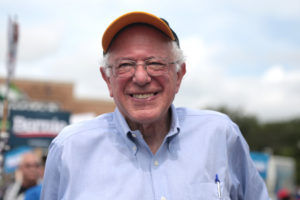
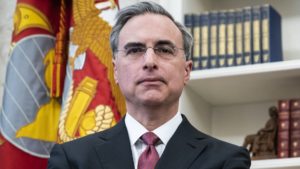

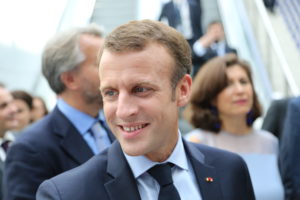

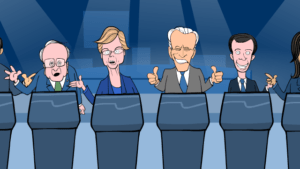
You need to be a supporter to comment.
There are currently no responses to this article.
Be the first to respond.